-
Using river sediment to repair the coast

The water of the Mississippi River swells beyond levees and flood-control barriers, flooding large areas, destroying costly infrastructure assets, and inflicting economic harms; not all is bad, though: large floods like the current one carry huge quantities of sediment that eventually deposit on the riverbed, making the river shallower, or are carried out to the Gulf of Mexico; the vast amount of water going south will replenish Louisiana’s coastal wetlands, and the sediment carried by the water will restore long stretches of eroding coastline and rebuild barrier islands in the Gulf
-
-
Scientists detonate underground bombs in California for earthquake research
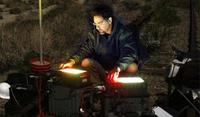
To study California’s fault lines, researchers recently detonated explosives underground to create 3D models of seismic activity; a team of geologists and seismic experts travelled to areas in the Imperial and Coachella Valley, roughly 150 miles northeast of San Diego, California, to study the southern tip of the San Andreas Fault; a team detonated more than 120 explosives more than sixty feet deep to set off seismic waves; the team measured these wave patterns with 3,000 different sensors to create a 3D map in these fault areas; their work comes as part of the Salton Seismic Imaging Project
-
-
Disaster relief innovation: concrete tent
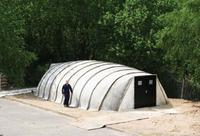
Among innovations which could help relief efforts following major disasters is a fabric shelter that, when sprayed with water, turns to concrete within twenty-four hours; the system works by impregnating cement particles into a fabric from which the tent is made; when the folded tent arrives at the disaster area, it is unrolled, tacked down with stakes, and then filled with air via a fan; once in place, the tent is soaked with water and then left to dry for twenty-four hours; once the concrete hardens, the tents can last for up to ten years; the tents come with installable doors, and since the walls are hard, electrical outlets and plumbing pipes can also be installed
-
-
Barge traffic resumes on Mississippi River

On a typical day, some 600 barges move back and forth along the Mississippi, with a single vessel carrying as much cargo as 70 tractor-trailers or 17 rail cars; the barges haul coal, timber, iron, steel, and more than half of America’s grain exports; interruptions of barge traffic could thus cost the U.S. economy hundreds of millions of dollars for each day the barges are idled; early Tuesday the Coast Guard halted barge and cargo haulers traffic along a 15-mile stretch of the river near Natchez, Mississippi; the Coast Guard and the Army Corps of Engineers were worried that the heavy wake churned by barges and cargo haulers increase the pressure on levees which are already straining to hold back the rising river; on Tuesday night the Coast Guard re-opened the blocked section, and barges were allowed to go through but only one at a time, and at a very low speed
-
-
Japanese government anticipated tsunami's effects at nuclear plants
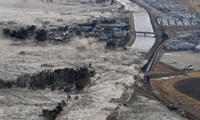
Growing evidence suggests that the Japanese government and Tokyo Electric Power (TEPCO) ignored clear warnings that infrastructure at the Fukushima Daiichi power plant would be damaged in the event of a massive earthquake; Japan’s Mainichi Daily recently obtained government documents that indicate a government research group clearly outlined the effects of tsunamis on nuclear plants; as TEPCO battles to contain the radiation spewing from the Fukushima Daiichi reactors, the power company and the government have insisted that the 11 March earthquake and tsunami that knocked out cooling systems at the Fukushima Daiichi plant was well beyond their expectations
-
-
Fukushima lessons for U.K.'s nuclear industry
An interim assessment of the implications of the nuclear crisis in Japan concludes there is no need to curtail the operations of nuclear plants in the United Kingdom but lessons should be learnt; the report identifies twenty-five recommended areas for review — by either industry, the government, or regulators — to determine whether sensible and appropriate measures can further improve safety in the U.K. nuclear industry; these include reviews of the layout of U.K. power plants, emergency response arrangements, dealing with prolonged loss of power supplies, and the risks associated with flooding
-
-
More setbacks at Japan's beleaguered nuclear plant
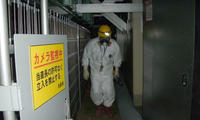
Japan’s latest efforts to contain reactor no. 1 at the Fukushima Daiichi plant hit a major obstacle last Saturday when a worker discovered a large pool of radioactive water in the reactor building; the pool is an estimated 18 feet deep and holds as much as 3,000 tons of water, more volume than an Olympic sized swimming pool; additional measures were being readied to treat and store radioactive water at Fukushima; officials have begun preparing a nearly 450 foot long “Mega-Float” that was previously used as an artificial island for fishing south of Tokyo to store the contaminated water
-
-
More American civil engineers deployed to Japan to study damage
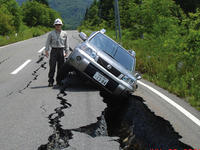
Last week the American Society of Civil Engineers (ASCE) deployed two more disaster assessment teams to Japan to study the damage wrought by the 11 March earthquake and tsunami; the two teams, the third and fourth deployed by ASCE, will tour the damaged areas which include the approximately 292 square miles inundated by the tsunami; one team will focus on examining the effects that the tsunami and earthquake had on port structures; the other team will focus their efforts on investigating the impact of the earthquake and tsunami on coastal structures like tsunami walls, breakwaters, and seawalls
-
-
Historic, desperate measures to control Mississippi River
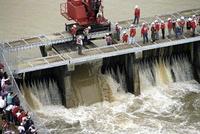
The historic levels of water swelling the Mississippi River required the Army Corps of Engineers to take historic measures to prevent catastrophic flooding of Baton Rough and News Orleans: first, the Morganza control structure, located 186 miles upriver of New Orleans and completed in 1954 as part of the Army Corps of Engineers’ broad flood-protection upgrades in the wake of the Great Flood of 1927, was opened for only the second time to allow water to flow out of the river and into the Atchafalaya basin, a designated flood relief area; the Corps says that Saturday marked the first time in history that all three floodways built by corps after 1927 flood — the Morganza Floodway, the Bonnet Carre Spillway, and the Birds Point floodway in Missouri — have been in operation at the same time; about 25,000 people and 11,000 structures are in harm’s way, as up to 25 feet of flooding is expected in a 3,000 square-mile area of Louisiana
-
-
Early warning system helped save lives in Japanese quake

Japan has spent millions of dollars to build a sophisticated early warning system for earthquakes and experts say that it helped save millions of lives and mitigated the damage from the 11 March earthquake and tsunami; while the massive 9.0 magnitude earthquake and tsunami flattened much of northeastern Japan, the damage would have been far worse had Japan not had its early warning system in place; the system can provide anywhere from ten to thirty seconds of advance notice before an earthquake strikes giving Japan’s residents just enough time to slow down trains so they do not derail, shut off dangerous machinery, and send people to find cover
-
-
Severe tropical droughts as northern temperatures rise
A sediment core from a South American lake revealed a steady, sharp drop in crucial monsoon rainfall since 1900, leading to the driest conditions in 1,000 years as of 2007 and threatening tropical populations with water shortages; a 2,300-year climate record researchers recovered from an Andes Mountains lake reveals that as temperatures in the Northern Hemisphere rise, the planet’s densely populated tropical regions will most likely experience severe water shortages as the crucial summer monsoons become drier
-
-
Swollen Mississippi River to be closed for traffic as of Monday
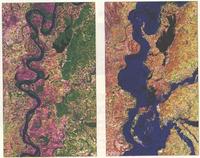
Swollen by weeks of heavy rain and snowmelt, the Mississippi River has been breaking high-water records that have stood since the 1920s and 1930s; it is projected to crest at Vicksburg, Mississippi, on 19 May and break the mark set there during the historic Great Flood of 1927; the crest is expected to reach New Orleans on 23 May; officials with the Port of New Orleans said the Coast Guard may close the river to ships as early as Monday, halting traffic on one of the world’s busiest commercial waterways; barges headed south from the U.S. heartland to the Port of South Louisiana at Reserve, upriver from New Orleans, would be unable to reach grain elevators; massive ships that carry U.S. corn, soybeans, and other crops out of the country would be unable to move
-
-
New slippery slopes detection system developed
One result of climate changes has been that the number of avalanche threats has been increasing in the Alps and other alpine regions, with fatal consequences for people and infrastructures; continuous monitoring of every endangered area has been lacking until now because of high costs and manpower requirements; German scientists have now developed an inexpensive system, which, with the help of several technologies, can continuously monitor slopes, assess changes, and provide early warnings to communities potentially affected by landslides
-
-
Turkey plans two earthquake resistant cities to move residents from vulnerable Istanbul
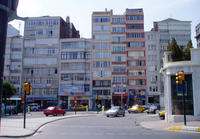
To encourage residents to move away from seismically unsafe neighborhoods, Turkey’s government recently announced that it will begin building two earthquake-resistant developments near Istanbul; the city of more than twelve million people currently sits near a major fault-line that could potentially kill thousands in the event of a major earthquake; engineers and seismic experts warn that Istanbul’s poor construction, shoddy city planning, and overcrowding would result in many fatalities in the event of an earthquake; officials plan for the new urban centers to be home to roughly 1 million residents each; any move to the new settlements would be entirely voluntary
-
-
Lompoc, CA prepares for the big quake
Following the 11 March earthquake and tsunami that struck Japan, Lompoc, California is evaluating its own earthquake preparation should a similar 9.0 magnitude strike; while Lompoc may be safe from a tsunami, the town is woefully unprepared for a major earthquake; Bruce Taylor, Lompoc’s former building safety inspector, bluntly stated that many buildings would not stand up to a major earthquake; to ensure that its buildings are seismically safe, the city of Lompoc is offering incentives and funding to help property owners evaluate their buildings and conduct seismic retrofits
-
More headlines
The long view
The Surprising Reasons Floods and Other Disasters Are Deadlier at Night
It’s not just that it’s dark and people are asleep. Urban sprawl, confirmation bias, and other factors can play a role.
Why Flash Flood Warnings Will Continue to Go Unheeded
Experts say local education and community support are key to conveying risk.
